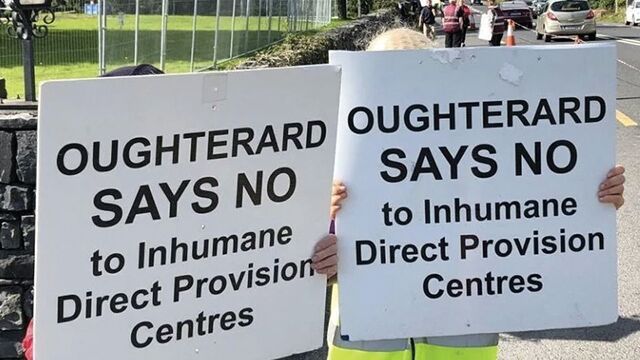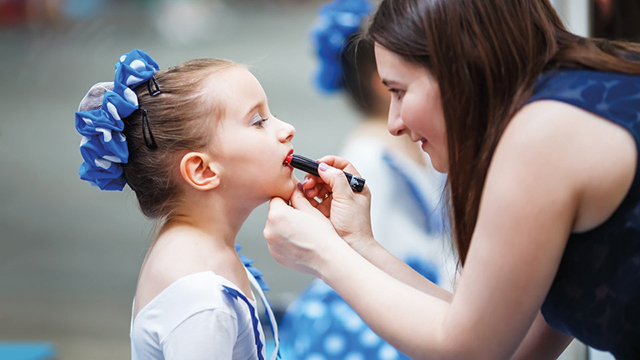
For a country that uses the slogan of “100,000 welcomes” to visitors, recent events of arson and protests would lead you to think that Ireland is not as welcoming and friendly as it claims to be.
During the month of October, Sinn Fein TD Martin Kenny said he had received death threats after he spoke out in Dáil Eireann against far-right elements in Irish society using anti-immigrant rhetoric.
Kenny’s remarks were spurred by the aftermath of the 2019 Grays Incident in Essex, and recent protests against the building of a Direct Provision centre for over 100 asylum seekers in his own home constituency in County Leitrim. On October 28th, this boil up began to spill over when Kenny’s car was set ablaze outside his family home in Aughavas.
While nobody was harmed and the incident was condemned by politicians from all different parties across the country, protests seemed to continue in preventing asylum seekers from entering their hometown.
Historically, thousands of Irish men and women have left their homes and lives to scatter to the four corners of the globe in hope for a better tomorrow. While they built their new lives they often did so through great hardship and discrimination, only for them to leave behind a better future for their family. Overtime eventually the image and racial perception of the Irish abroad changed radically and became overwhelmingly accepted.
This week nearly 400 local people have signed up to man round-the-clock protest shifts in Ballinamore against plans to house up to 130 asylum seekers in the town.
According to the Journal.ie there are currently 38 existing direct provision centres operating at full capacity and an additional 1,400 people are being housed in 34 emergency accommodation centres. The department is expected to spend €120 million on direct provision this year, a 50 percent increase on last year, with the majority of the money going to private operators.
To illustrate the scale of accommodation required, over 1,000 people currently live in emergency accommodation. By comparison, 800 people live in Mosney, Co Meath, by far Ireland’s largest Direct Provision centre.
People in Ballinamore do have genuine concerns about the services they have in such a small town being impacted by the sudden arrival of a relatively large group of people. However, the attack on Martin Kenny takes this story to what many believe to be an unacceptable and deplorable level.
While there are locals who are legitimately annoyed at the lack of consultation before asylum seekers arrive, there is also a sinister element infiltrating the protests.
Just this week a motion calling on the Department of Justice to amend the plan of accommodating 130 asylum seekers in Ballinamore town has been passed by Leitrim County Council. Fine Gael Councillor Reynolds Flynn has stated that Ballinamore is not saying no to the asylum seekers, and said that she had the utmost sympathy and empathy for them. However, she felt strongly that the number being proposed is too many.
She said they are being asked to take the equivalent of 15 percent of their population and that instead perhaps 3 percent would be more acceptable.
In Achill, The Achill Head Hotel was earmarked to provide emergency short-term accommodation to 13 women who have come to Ireland seeking international protection. However, the plan has been postponed due to ongoing protests.
Fianna Fail Councillor Paul McNamara said locals believe the Achill Head Hotel is not a suitable location for emergency accommodation.
“We are happy to integrate asylum seekers looking to start a new life into our villages and local schools in a different manner. We as a community are deeply disappointed that we were not afforded the opportunity to do so,” McNamara said.
The story of Ireland and asylum seekers is nothing new and has a long history. In 1999 Deirdre McCarthy conducted an RTE interview with then twenty-five-year-old Nigerian lawyer Irene Oshodi-Glover who stated at the time that since her arrival in Ireland she said she has experienced nothing but racial insults and accusations of coming to Ireland for financial benefits and allowances.
In 2016, figures from the EU agency, Eurostat, showed Ireland was at the bottom of the league for accepting refugees.
That year Ireland also had the highest level of refusals for asylum seekers in the EU, turning down more than 90 percent of those who arrived here seeking refuge.
In that 12-month period, Ireland received less than 10 percent of asylum applicants to similar-sized EU states. Denmark, with a population of 5.4m, accepted 21,000 asylum applicants; Norway, with a population of 5m, accepted 28,000 applicants. Ireland is recorded by Eurostat as receiving only 2,780 applicants in 2016 and just over 3,000 in 2018.
According to the Journal.ie, since 1999 there has been a sharp increase in the number of people seeking asylum in Ireland. In favour of asylum seekers, Direct Provision has been repeatedly criticised by migrant rights groups due to the length of time people remain in centres while their asylum applications are processed, the conditions of centres and the psychological effects on those living in these centres.
It’s estimated that over 60,000 asylum seekers have been placed in Direct Provision since its introduction.
Conor Breslin
Image Credit: Evgeny Shtorn



